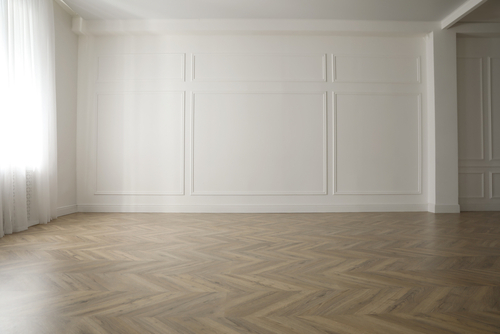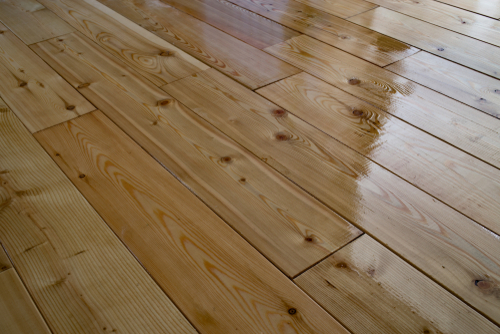
When Is The Best Time To Waterproof Flooring?
June 19, 2023
Flooring for Commercial: Balancing Functionality, Aesthetics, and Longevity
August 30, 2023Is Newly Installed Vinyl Flooring Clean?
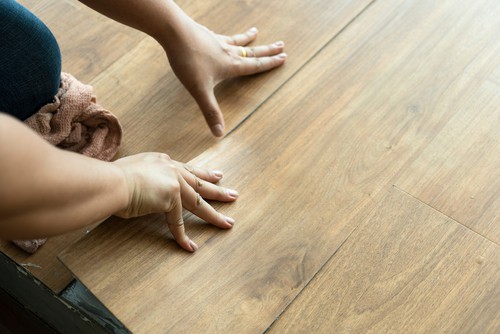
Is Newly Installed Vinyl Flooring Clean
Is Newly Installed Vinyl Flooring Clean? Welcome to our comprehensive guide on newly installed vinyl flooring and the importance of keeping it clean.
This article will delve into vinyl flooring, its various types, the installation process, and, most importantly, the proper cleaning techniques to maintain its longevity and appearance.
It is a synthetic flooring material in various forms, such as vinyl sheets, tiles, and planks.
The unique manufacturing process allows vinyl flooring to mimic the appearance of natural materials like hardwood, stone, or ceramic tiles, making it a popular choice for homeowners and businesses alike.
Preparing for Vinyl Flooring Installation
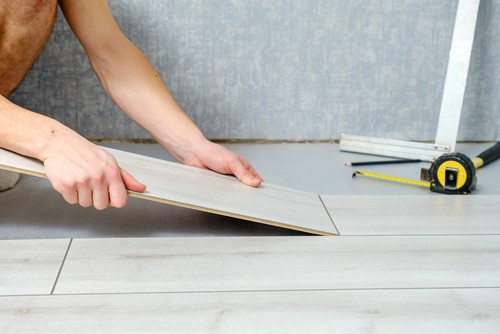
Before installing vinyl flooring, proper preparation is essential for ensuring a smooth and long-lasting result. Here are some crucial pre-installation cleaning tips:
- Cleaning the Subfloor: Ensure the subfloor is clean, dry, and free from debris or contaminants. Vacuum or sweep the area thoroughly to create a clean and even surface for installation.
- Removing Obstacles: Clear the area of any furniture, appliances, or objects that could hinder the installation process. This step will facilitate a seamless installation without any obstructions.
- Checking for Imperfections: Inspect the subfloor for any imperfections like cracks, uneven surfaces, or moisture issues. Addressing these problems before installation is crucial to prevent future damage to the vinyl flooring.
The Installation Process
Regarding vinyl flooring installation, you have two options: hiring professional installers or opting for a do-it-yourself (DIY) approach. While DIY installation can save money, professional installers ensure a flawless installation, which is especially important for achieving the best results with certain vinyl flooring types.
Necessary Tools and Materials
For a successful DIY installation, you will need the following tools and materials:
- Utility knife
- Measuring tape
- Chalk line
- Trowel
- Adhesive/glue
- Roller
- Vinyl floor seam sealer
Step-by-Step Installation Guide
- Prepare the Subfloor: Make sure the subfloor is clean, dry, and level as per the manufacturer’s recommendations.
- Measure and Cut: Measure the room’s dimensions accurately and cut the vinyl flooring accordingly, leaving some extra material for adjustments.
- Apply Adhesive: Following the manufacturer’s instructions, the recommended adhesive to the subfloor using a trowel.
- Position and Press: Carefully press the vinyl flooring on the adhesive firmly to ensure proper bonding.
- Seal the Seams: If you have chosen vinyl tiles or planks, use a vinyl floor seam sealer to secure the seams and prevent moisture infiltration.
- Use a Roller: Roll over the installed vinyl flooring with a roller to ensure a smooth and even surface.
The Cleaning Process
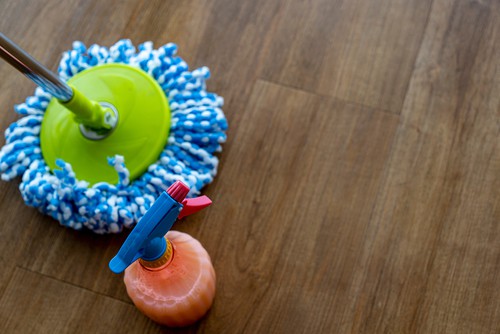
Keeping newly installed vinyl flooring clean is essential for its longevity and maintaining its aesthetic appeal. We will now explore the post-installation cleaning process and recommend the best cleaning products and techniques.
Post-Installation Cleaning
After the vinyl flooring installation, follow these cleaning steps:
- Removing Debris and Dust: Thoroughly sweep or vacuum the newly installed vinyl flooring to remove any debris or dust from the installation process.
- Addressing Adhesive Residue: If there’s any adhesive residue on the surface, use a recommended adhesive remover to clean it gently.
- Cleaning Seams and Corners: Pay special attention to cleaning the seams and corners of vinyl tiles or planks. Use a soft brush or cloth to reach into crevices and ensure a spotless finish.
Recommended Cleaning Products
Choosing the right cleaning products is crucial to avoid damage to the vinyl flooring. Here are some safe and effective cleaning solutions:
- pH-neutral floor cleaners
- Warm water and mild detergent
- Vinegar and water mixture (for tougher stains)
Proper Cleaning Techniques
To maintain the pristine condition of your vinyl flooring, follow these best practices for daily maintenance:
- Daily Sweeping or Vacuuming: Regularly sweep or vacuum the vinyl flooring to prevent the accumulation of dirt and debris.
- Use Soft Mop: Dampen it with a mild cleaning solution.
- Avoid Harsh Chemicals: Refrain from using harsh chemicals or abrasive cleaners, as they can cause damage to the vinyl surface.
- Prevent Scratches and Dents: Place felt pads under furniture legs and avoid dragging heavy objects on the vinyl floor to prevent scratches and dents.
- Cleaning Different Vinyl Types: Vinyl plank, tile, and sheet flooring may require slightly different cleaning approaches. Always follow the manufacturer’s guidelines.
Dealing with Stubborn Stains
Despite taking precautions, stains may still occur on vinyl flooring. Here’s how to deal with them effectively:
- Identifying Common Stains: Identify the type of stain (e.g., food, ink, grease) to choose the appropriate stain removal technique.
- Stain Removal Techniques: Use baking soda, rubbing alcohol, or specialized vinyl floor stain removers to gently remove stains without causing harm to the flooring.
Maintenance and Care for Vinyl Floor
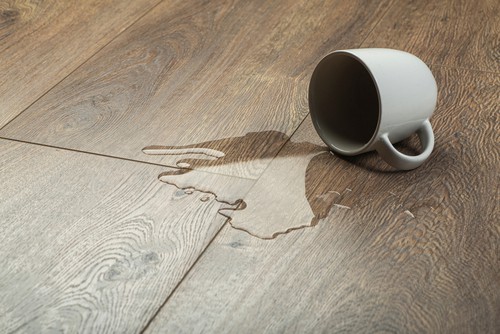
Maintaining a regular cleaning schedule is essential to keep your vinyl flooring looking pristine for years. Consider these tips for proper maintenance:
- Cleaning Schedule: Establish a weekly cleaning schedule and stick to it to prevent dirt buildup.
- Preventive Measures: Place doormats at entryways to reduce the amount of dirt and moisture tracked onto the vinyl flooring.
- Seasonal Maintenance: Perform deeper cleaning and maintenance at the change of seasons to keep your flooring in top condition.
Common Myths About Vinyl Flooring Cleaning
Let’s debunk some common myths and misconceptions about cleaning vinyl flooring:
- Myth: Steam mops are safe for vinyl flooring.
Fact: Steam mops can damage vinyl flooring by causing warping or delamination. - Myth: Bleach is suitable for cleaning vinyl floors.
Fact: Bleach can discolor and damage vinyl flooring, so avoid using it as a cleaning agent. - Myth: All vinyl flooring requires the same cleaning methods.
Fact: Different types of vinyl flooring may need specific cleaning techniques; refer to the manufacturer’s guidelines.
Frequently Asked Questions (FAQs)
- How long should I wait to clean the newly installed vinyl flooring?
You can start cleaning your newly installed vinyl flooring 24 hours after installation.
- Can I use steam mops on vinyl flooring?
No, steam mops are not recommended for vinyl flooring as they can cause damage.
- What are the best cleaning methods for vinyl plank flooring?
Use a soft mop or microfiber cloth with a pH-neutral floor cleaner.
Is Newly Installed Vinyl Flooring Clean? – Conclusion
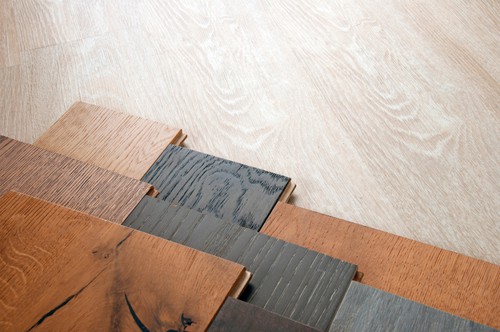
In conclusion, keeping your newly installed vinyl flooring clean is crucial for maintaining its appearance and longevity.
By following the proper cleaning techniques and using the recommended products, you can enjoy a pristine vinyl floor for many years.
Regular maintenance and adhering to the manufacturer’s guidelines will help you protect your investment and keep your vinyl flooring looking as good as new.
Are you looking for a professional vinyl flooring installation service? We also provide other flooring installation services such as laminate, wood, parquet, engineered, and timber decking flooring! Contact us today to find out more!

